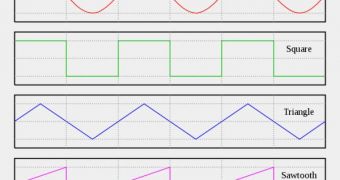Waveforms are concepts very well known to those working with electricity, or in music production, but for different reasons. They are graphical shapes showing how electrical signals vary over time, and they are extremely useful in setting the groundwork for new types of circuits and other electronic devices. Now, scientists at the US National Institute of Standards and Technology (NIST) have developed the first method that allows for the calibration of entire waveforms, rather than only pieces of them, as is the current practice. The instrument could have significant uses in a wide array of research fields.
Waveforms are extremely complex graphs. Of course, simpler versions also exist, such as the triangle, the sine, the square, or the sawtooth, but some, especially those determining advanced, high-speed devices, can be fairly intricate and hard to decipher. They are usually described by a single number, depending on which of their parameters is being followed. Engineers, for example, use the term “pulse duration” to refer to the transition time between the levels representing “0” and “1,” which is, in fact, the binary code electronic devices employ to get along.
Traditional analysis is not especially fit to identify subtle differences between similarly looking waveforms in various types of complex circuitry. When poor identification occurs, various things can happen, all of them bad. The most grave error is a signal mistake, in which a “1,” for instance, is mistaken for a “0.” Additional errors can refer to misidentification, or what is known as signal defects. The new method essentially provides both signal reading and measurement uncertainty at regular intervals, but along the entire length of the waveform, rather than only a limited piece of it.
Currently, the complexity of the mathematical algorithms involved means that the method is only practiced on NIST's 750 oscilloscopes, but plans are to devise a piece of computer software that would be able to automate the procedure and allow for it to be shared with the world. The new tool could prove to be extremely useful in the near future, considering the fact that NIST's customers, which include industry and military contractors, are constantly looking to measure ever-higher frequencies, data rates, and bandwidths. The global market for oscilloscopes alone is worth about $1.2 billion per year.
What experts may find very interesting is the fact that the new NIST method allows for quantifying errors in the waveform measurements. That is to say, it can accurately transfer measurement uncertainties between the time domain (which is represented by the results arranged by time) and the frequency domain (the same data arranged by frequency). Data transfer between the two domains is currently being made via a set of equations known as the “Fourier transform.” “The new NIST method is, in effect, a Fourier transform for uncertainty,” NIST physicist Paul Hale explains.

 14 DAY TRIAL //
14 DAY TRIAL //